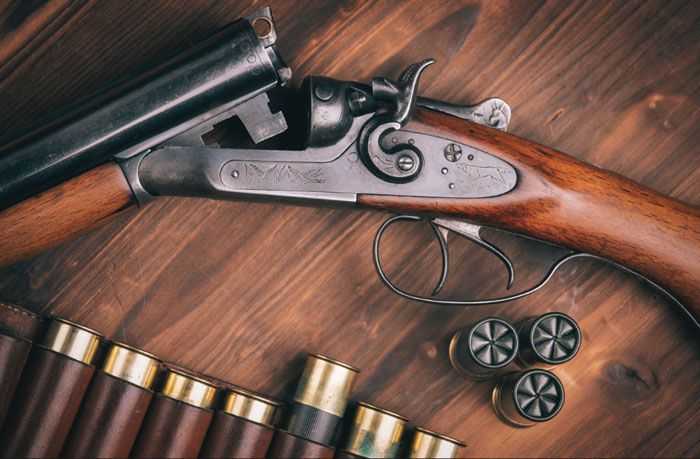When my father was alive and president of the Smokey Mountain Gun Collectors in Knoxville, Tenn., I had the opportunity to attend a few shows that made his circuit. Shows in Greenville, Macon, Asheville, Birmingham and others gave me exposure to the numerous dealers and other small collectors and sellers.
At many shows you might see guns of rarity; anything from a 1894 Winchester Saddle Carbine to a Syracuse-made Lefever Optimus, owned by some northeastern CEO in 1901. But I always pondered this, “What did the owners past and present do to keep these firearms in such pristine condition?” The answer, of course, was handling and storage.
For hundreds of years, sportsmen, soldiers, market hunters and collectors did the best they could, using whatever oil was available to clean and lubricate their guns. They stored their weapons any place that was out of the way: closets, corners and over the fireplace. It wasn’t until after World War II, with the rapid development of super materials like plastic and nylon, that more firearms could be cased to preserve appearance and condition, in cheap-priced boxes and slipcases that anyone could afford. The problem, however, was that without the proper preparation, those cheap plastic cases could actually accelerate rust and corrosion on fine firearms.
Not being above asking for advice on the subject, I called my old buddy Randall Pence, executive director of sales and marketing for Ruger Firearms to help me understand from a manufacturer’s standpoint the simplicity, yet seriousness, of the matter. And since Randall has traveled the world for Ruger, and being that he is frequent visitor to Africa for big game, I thought, “Why not ask him?” Randall told me that the biggest mistake often made in long-term storage is when a firearm owner puts away a gun loaded and stored with the muzzle end up.
“Ed, I can’t stress enough the fact that the gun needs to be unloaded and the firing pin and action relaxed by the use of the ‘Snap Caps’ before cleaning or storing. High-grade guns should always be stored with the barrels down.”
This practice prevents the oil from leaching into the action and wrist of the stock, possibly causing wood rot or gummed up action over time. And with just about any decent rifle or shotgun now costing around $1,000, high grade becomes just about every gun on the market.
Randall went on to say, “Don’t store your firearms in a cotton sack for any length of time, but put them in a safe environment where conditioned air can circulate around them.”
This is where many of us fail to follow through. Coming in from a field, we’re tired and need to take care of the dogs, kids, boat, etc. and forget to wipe down and put away our guns. Instead, we leave them in slips or plastic cases, giving rust an opportunity to do its dirty deed.
The process of wiping down and cleaning your guns before storage is a subject often debated over coffee or other sweet libations, especially when it comes to the brand and types of oils or cleaners to use. In the last decade or so we have seen the rise of synthetics that have almost completely removed traditional oils and cleaners from the limelight. Masterfully constructed blends are what will be preserving firearms in the future. And while the old guard like Remington Rim Oil, Hoppes No. 9, Birchwood/Casey, W-D 40 and others are still the main products in all the marts, they too are manufacturing new products that are changing the concept of gun oil.
Of the new synthetics and blends on the market there are two that I have personally used with excellent results for both everyday cleaning and long- term care. Clenzoil and NyOil both make oils that are virtually odorless and work well on any action that is case colored or high-grade walnut that you don’t want stained or damaged. NyOil incidentally is a fairly old company with its roots in the whale oil trade and today manufactures an oil that is clear in color. Remember, all oils should be applied with a light film and a lint-free cloth. After thoroughly cleaning and oiling the gun, putting it away in an armored safe is an option that can pay great dividends.
Safes are more than hunks of metal welded together. Today, a safe that will provide satisfactory results will be one with features like heavy-gauge steel construction, fire ratings with interior heat temperatures of less than 400 degrees for 30 minutes or more, multiple locking door bolts (the more the better), waterproof barriers and an expandable capacity to handle your inventory or firearms, jewelry and important documents.
You can get lost in the plethora of information regarding gun safes, but companies consistently scoring high are folks like Browning, Cannon and Liberty. The bottom line on safes is to look for proven reliability, the day after a house fire or flood.
We enjoy firearms because they go bang, put meat on the table and win a trophy or two for the bookshelf—and taking care of them is the key to the enjoyment they bring. That said, the soldier’s motto fits nicely: “Take care of your firearm, and your firearm will take care of you.” Double Gun Regards.







